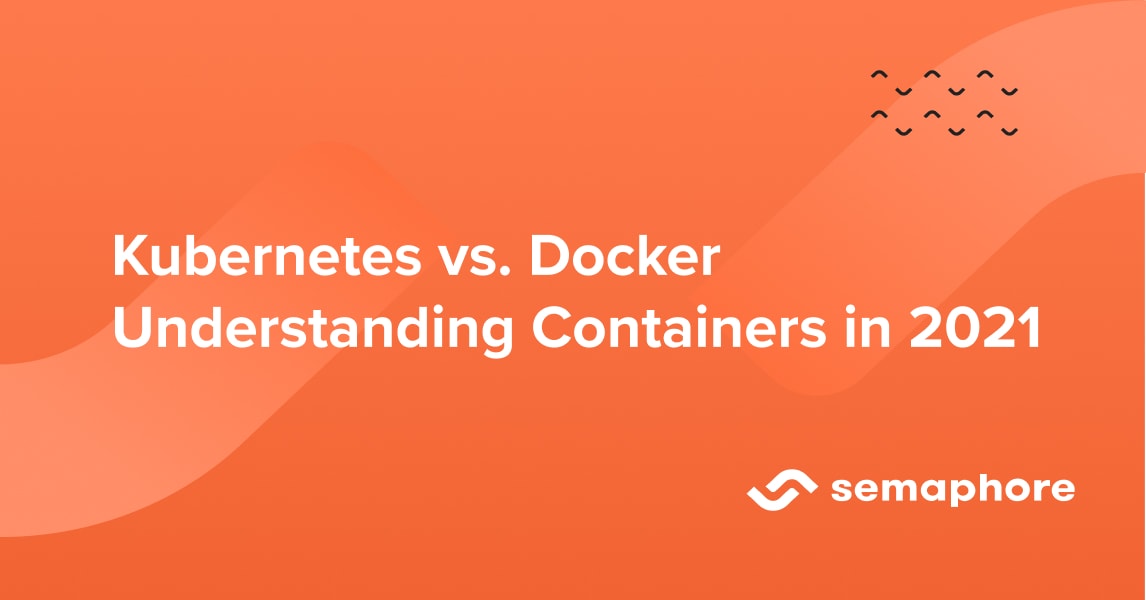
- #Difference between docker and kubernetes how to
- #Difference between docker and kubernetes upgrade
- #Difference between docker and kubernetes portable
- #Difference between docker and kubernetes code
You can stop the containers if they don’t respond to the health checks.

If the Node dies, then containers are replaced or re-planned on the other Nodes. Self Repair: This is a unique feature in the Kubernetes which will restart the container automatically when it fails.Auto Scaling: Based on the CPU usage, the vertical scaling of applications is automatically triggered using the command line.Planning & Placement: Placement of the containers on the node is a crucial feature on which makes the decision based on the resources it requires and other restrictions.Service Discovery and load balancing: Kubernetes has a feature which assigns the containers with their own IP addresses and a unique DNS name, which can be used to balance the load on them.High availability by cluster federationīelow is the list of features which Kubernetes provides –.Largest Open Source project in the world.The top 10 reasons why Kubernetes is so popular are as follow: Kubernetes considers most of the operational needs for application containers.
#Difference between docker and kubernetes portable
#Difference between docker and kubernetes code
Kubernetes is a HUGE project with a lot of code and functionalities.

With Kubernetes you can manage your containerized application more efficiently. It is basically an open source toolkit for building a fault-tolerant, scalable platform designed to automate and centrally manage containerized applications. It is an open source cluster management system initially developed by three Google employees during the summer of 2014 and grew exponentially and became the first project to get donated to the Cloud Native Computing Foundation(CNCF). Now.Kubernetes (also known as K8s) is a production-grade container orchestration system. Docker helps us to create containers, and Kubernetes allows us to manage them at runtime. It can handle the container management responsibilities like container deployment, scaling, healing, and load balancing of containers. Then, the solution comes as a Container Orchestration tool called – Kubernetes.
#Difference between docker and kubernetes how to
How to monitor the health of the application and know when something goes wrong and seamlessly restart it?.
#Difference between docker and kubernetes upgrade
How to seamlessly upgrade an application without interrupting the services?.How containers can be coordinated and scheduled?.While Docker provides an open standard for packaging and distributing containerized applications, still there are problems that need to be tackled down like:. It packages up the services comprising an application and makes them portable across different compute environments, for both developers, testers, and production uses. It allows to “Build, Ship, and Run applications, Anywhere.” If it works on your machine, it will work on others’ machines too. The Development Team and the testing team now have the same system running on Docker containers. It makes it extremely easy for organizations to run applications in a similar environment without facing any issues of dependencies or OS as Docker provides its own OS libraries. But, before knowing the difference – first, let’s understand what is Docker and Kubernetes?īefore knowing what is Docker? – Let’s see what were the problems before Docker existed? Earlier the dev team used to send the code to the testers, but most of the time due to various dependencies the code could not run on the tester machines, but it worked fine on the developer’s machinesĭocker removed this issue called “dependencies”. But if we will use them in combination these tools can greatly benefit the organizations.

It may be quite contrary to say – but we can say that Kubernetes can run without Docker and Docker can also run without Kubernetes. The question itself is like comparing two different fruits like apples to oranges. These days one question I am getting frequently is that “what are the differences between Docker and Kubernetes?”


 0 kommentar(er)
0 kommentar(er)
